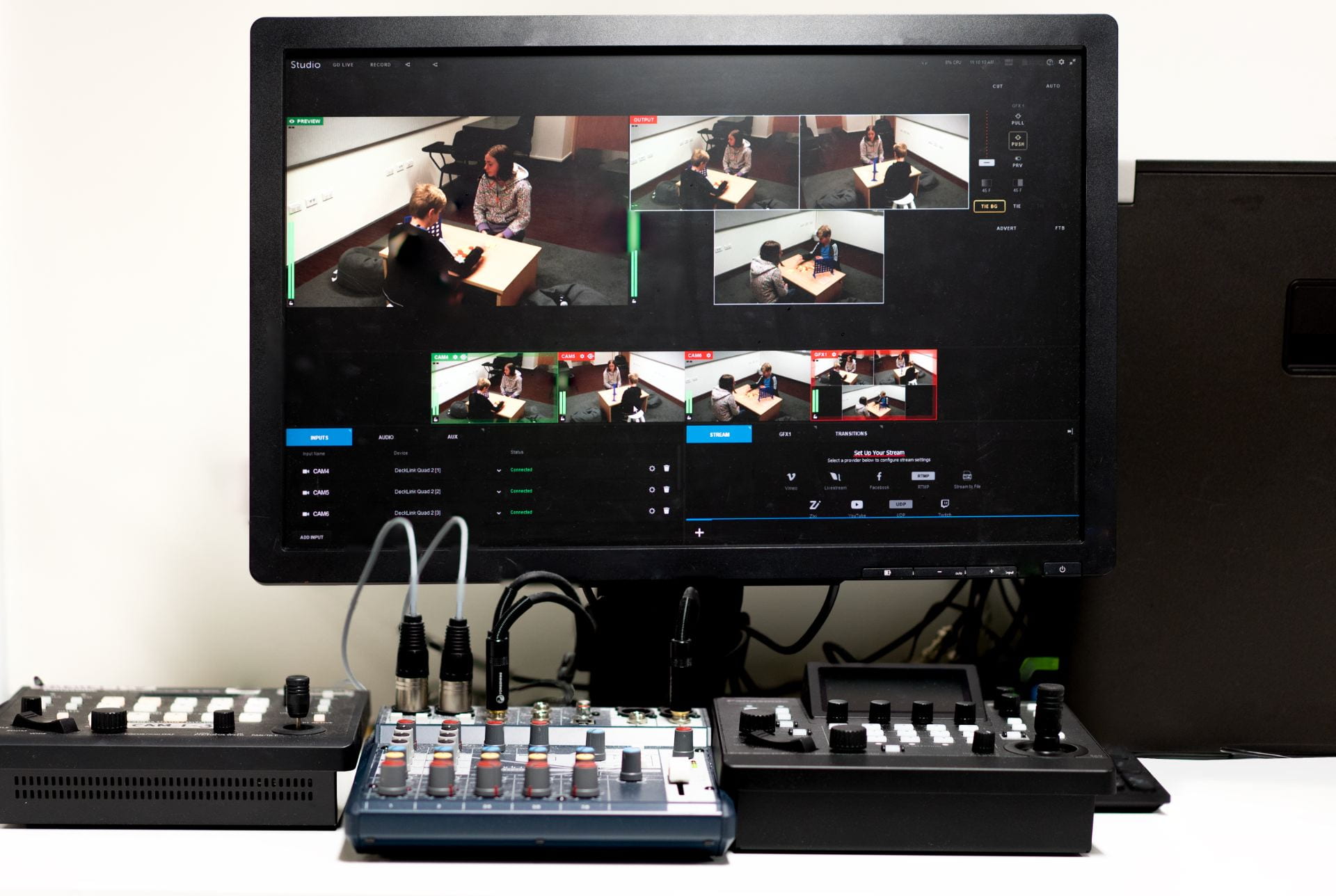
Video compression for REACH Lab’s study of family resilience and wellbeing
Prof Nickola Overall, Assoc Prof Annette Henderson, Valerie Chang, and the REACH Lab team, School of Psychology
Dr Jens Brinkmann and Nick Young, Centre for eResearch

Background
The REACH Research Group investigates how couples and families can overcome emotional, attachment and relationship difficulties to effectively support each other and resolve conflicts to enhance their health and wellbeing.
The Family Resilience and Wellbeing study is a longitudinal study examines the different ways parents and children remain resilient in the face of inevitable challenges and how these family dynamics relate to the wellbeing of the parents and children over time. An example of these challenges is during the COVID-19 pandemic when families in lockdown faced ongoing demands in stressful situations across health, employment, financial, and parenting domains.
The study
The first phase of the study started in 2018 by recruiting couples and their 4-year-old child to participate in a longitudinal study. These research sessions involved video-recording parents and their children completing a series of tasks, such as couples discussing relationship conflicts, children completing frustrating tasks, and families completing fun but challenging tasks like building a tower together. The same families were invited to return to complete similar activities in 2021-2022 and then again in 2022-2023. A key research component involves viewing and coding the video-recorded interactions for behavioural strategies that determine problem resolution, relationship quality and wellbeing, such as communication styles, emotion regulation, and parental responsiveness. The videos must be stored in high quality and easily accessible for coding.
Approach
In discussion between CeR Senior Specialist Jens Brinkmann and the School of Psychology’s Social Research Coordinator Valerie Chang, the idea of video compression was explored, tested, and refined to ensure that video quality was not sacrificed for storage space or cost. Tests were conducted on single video files, resulting in no video quality degradation perceived by a human tester at only about 20% of the file size.This approach was scaled up from a few files to around 1400 files that make up the current video inventory. CeR Senior Specialist Nick Young created an automated workflow in the Python programming language, using existing capacity on a very powerful VM that accounted for various aspects of the input video. For archival purposes, the original video files were not altered during this process and migrated to a Research Drive’s subfolder and physically moved onto magnetic tape.
Problem
Given the sensitive nature of the videos and their high quality, these are stored on UoA owned and managed network storage termed Network Research Drives. Given the considerable file size of around 75TB in total and commonly around 25GB per 1 hour of video, video playback often froze, stuttered, or the audio/visual would be out of sync despite a wired network connection. This was not only frustrating but also significantly hindered data analysis. The Centre for eResearch (CeR) offered a virtual machine (VM) service to help mitigate these challenges. However, data analysis was still challenging and constantly created additional work to upload new videos to the VM. Additionally, in 2023 the study has generated almost 1,400 hours of high-quality multi-camera video recorded data. The requested storage size increase of 50TB would have increased the running costs (from $300k to 500k pa at $4 per GB).
Research and impact
The video compression allowed researchers to analyse the videos without stuttering. The smaller videos also meant that researchers no longer had to rely on the VM and streamlined the workflow so that videos were not constantly being uploaded and removed from the VM, but instead, researchers could analyse the videos directly from the Research Drive. The folder structure and file names remained the same; only the file extension changed. Given the time and effort involved in data collection, the original video files were backed up on magnetic tape, which gave researchers peace of mind. Furthermore, the reduction in storage has led to approximately $230,000 in annual cost savings and aligned with the University’s long-term sustainability goal.

REACH Lab computer and controllers to capture several individual camera outputs and a composite stream.
REACH Lab’s Research Drive usage from the 15th of April to the 5th of August, 2023. There has been a sizable decrease in storage usage after the workflow optimisation.
See more case study projects

Our Voices: using innovative techniques to collect, analyse and amplify the lived experiences of young people in Aotearoa

Painting the brain: multiplexed tissue labelling of human brain tissue to facilitate discoveries in neuroanatomy

Detecting anomalous matches in professional sports: a novel approach using advanced anomaly detection techniques

Benefits of linking routine medical records to the GUiNZ longitudinal birth cohort: Childhood injury predictors

Using a virtual machine-based machine learning algorithm to obtain comprehensive behavioural information in an in vivo Alzheimer’s disease model

Mapping livability: the “15-minute city” concept for car-dependent districts in Auckland, New Zealand

Travelling Heads – Measuring Reproducibility and Repeatability of Magnetic Resonance Imaging in Dementia

Novel Subject-Specific Method of Visualising Group Differences from Multiple DTI Metrics without Averaging

Re-assess urban spaces under COVID-19 impact: sensing Auckland social ‘hotspots’ with mobile location data

Aotearoa New Zealand’s changing coastline – Resilience to Nature’s Challenges (National Science Challenge)

Proteins under a computational microscope: designing in-silico strategies to understand and develop molecular functionalities in Life Sciences and Engineering

Coastal image classification and nalysis based on convolutional neural betworks and pattern recognition

Determinants of translation efficiency in the evolutionarily-divergent protist Trichomonas vaginalis

Measuring impact of entrepreneurship activities on students’ mindset, capabilities and entrepreneurial intentions

Using Zebra Finch data and deep learning classification to identify individual bird calls from audio recordings

Automated measurement of intracranial cerebrospinal fluid volume and outcome after endovascular thrombectomy for ischemic stroke

Using simple models to explore complex dynamics: A case study of macomona liliana (wedge-shell) and nutrient variations

Fully coupled thermo-hydro-mechanical modelling of permeability enhancement by the finite element method

Modelling dual reflux pressure swing adsorption (DR-PSA) units for gas separation in natural gas processing

Molecular phylogenetics uses genetic data to reconstruct the evolutionary history of individuals, populations or species

Wandering around the molecular landscape: embracing virtual reality as a research showcasing outreach and teaching tool
























































































































































